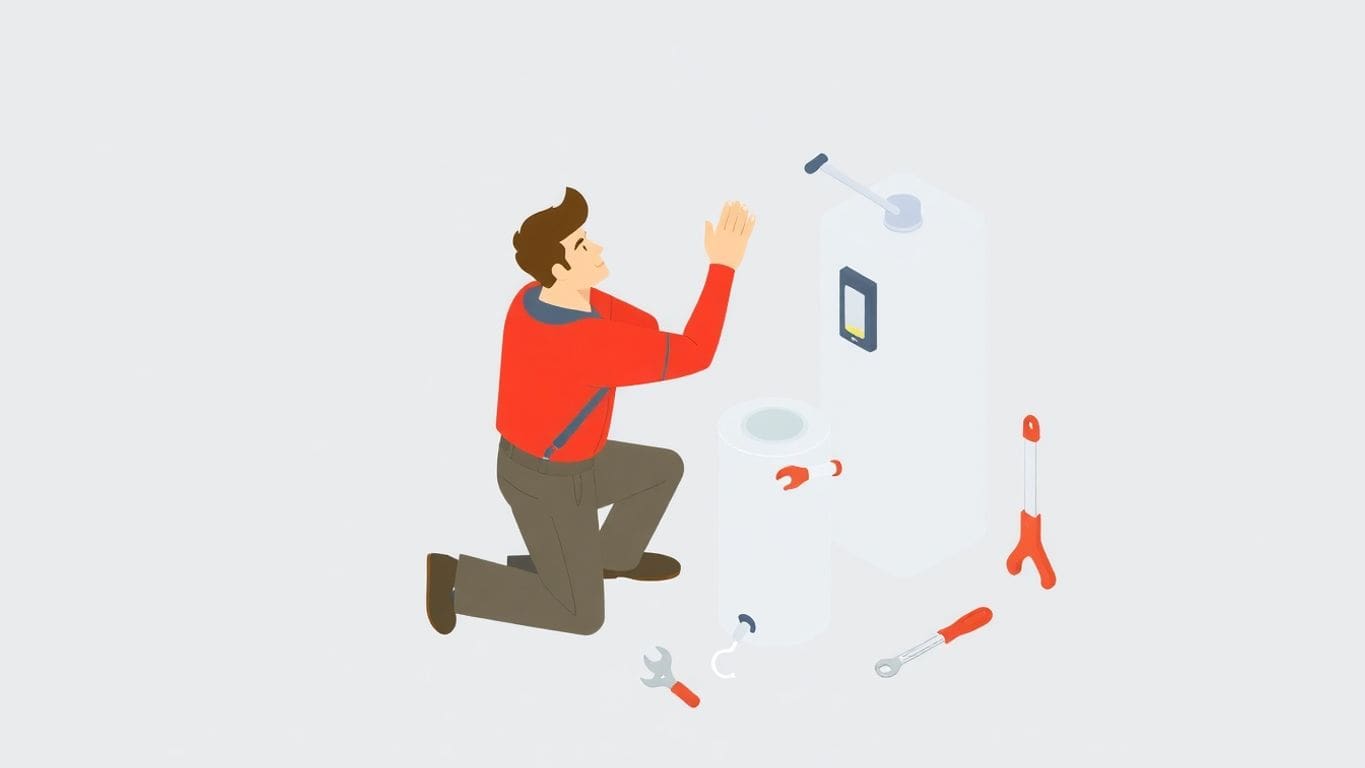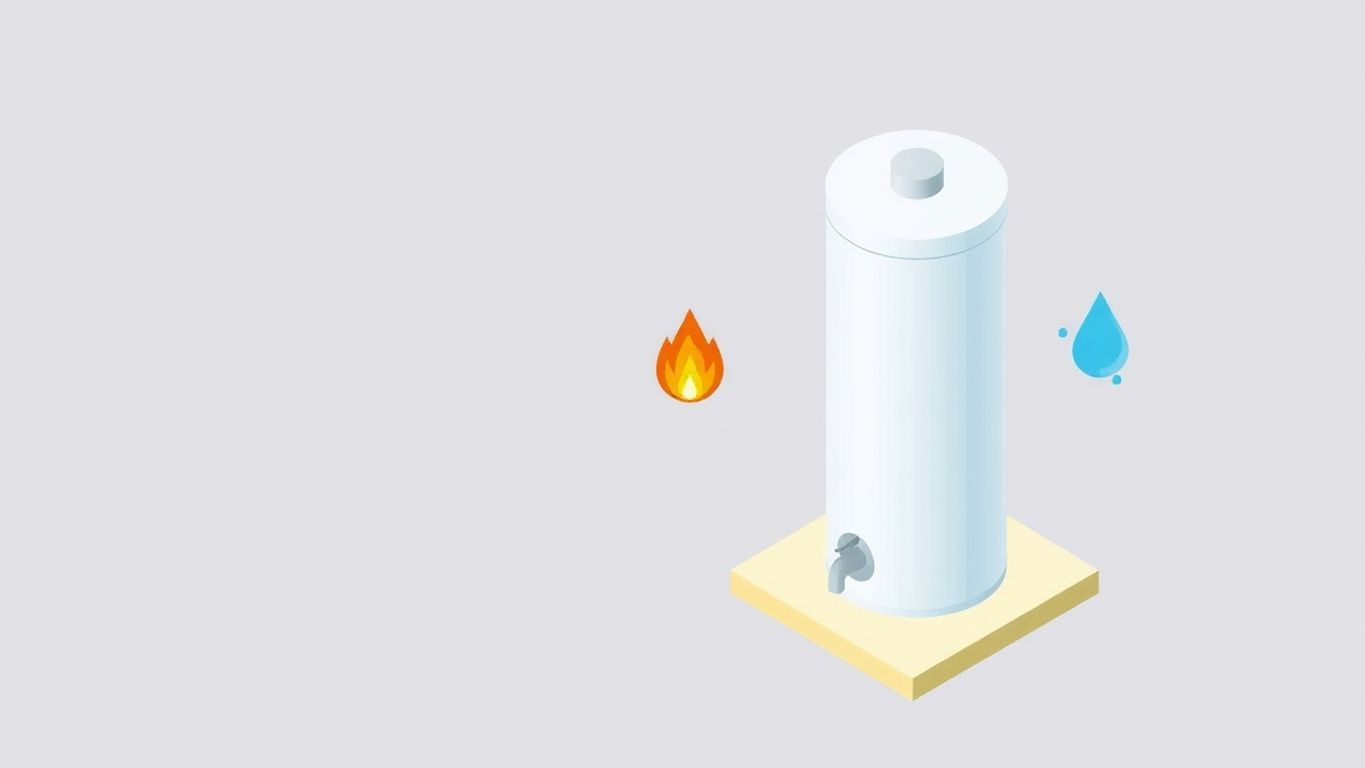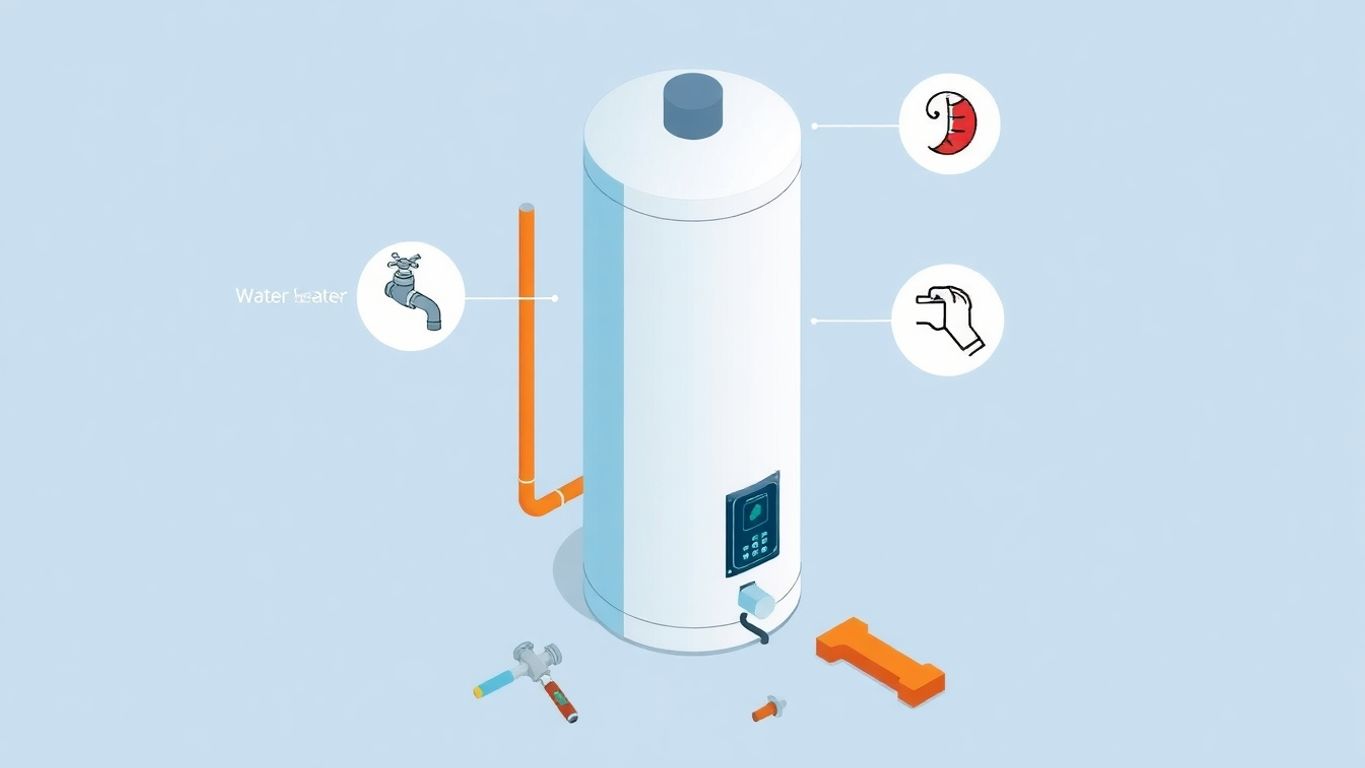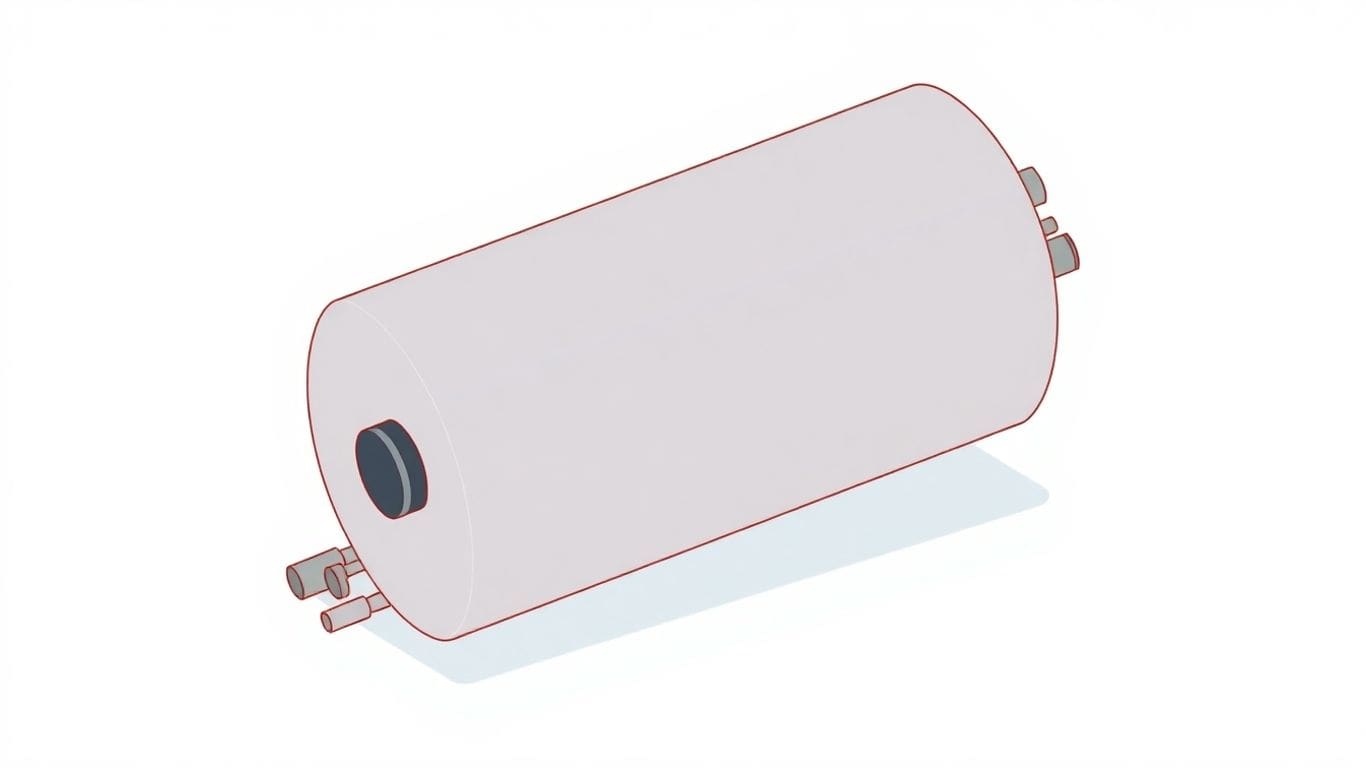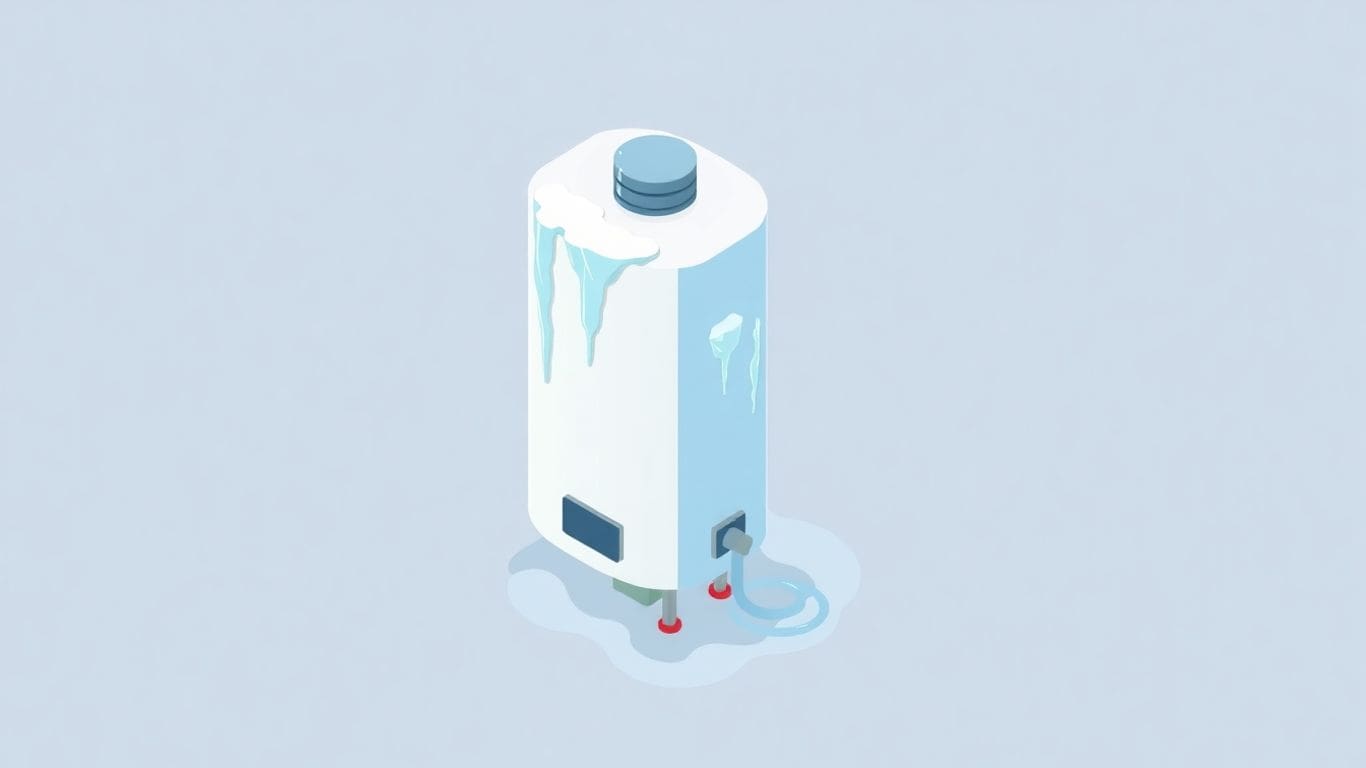Water heaters are crucial for keeping your home comfortable and clean. When they malfunction, it can lead to cold showers and unwashed dishes, which is a hassle. If you’ve been asking yourself, ‘why is my water heater not working?’ you’re not alone. Many common issues can cause a water heater to fail, but the good news is that many of these problems can be fixed without too much trouble. Let’s explore some common water heater issues and how to troubleshoot them.
Key Takeaways
- Check your circuit breaker if the water heater isn’t heating.
- Inspect the heating element for faults if water isn’t hot.
- Make sure the thermostat settings are correct when hot water is insufficient.
- Look for leaks around valves and pipes as they can indicate problems.
- Regular maintenance can extend the life of your water heater.
Understanding Water Heater Functionality
How Water Heaters Work
Ever wonder how you get hot water on demand? Water heaters are actually pretty simple. Most have a tank where water is heated and stored until you need it. Cold water comes in through a pipe, and a heating element or gas burner warms the water. When you turn on the hot water tap, hot water is pushed out of the tank. It’s like a big, insulated thermos that keeps water hot and ready for you.
Common Types of Water Heaters
There are a few kinds of water heaters you might have in your home:
- Tank water heaters: These are the most common. They store water in a tank and heat it up.
- Tankless water heaters: These heat water only when you need it, so you don’t have to store hot water.
- Heat pump water heaters: These use electricity to move heat from one place to another, instead of generating heat directly.
- Solar water heaters: These use the sun to heat water, which can save you money on your energy bill.
Choosing the right type depends on how much hot water you use and how much you want to spend.
Signs of a Failing Water Heater
It’s good to know when your water heater might be on its last legs. Here are some signs to watch out for:
- Old age: Most water heaters last about 8-12 years. If yours is older, it might be time to start thinking about a replacement.
- Rusty water: If your hot water is rusty, it could mean the tank is rusting inside.
- Leaks: Any leaks around the water heater are a bad sign.
- Strange noises: Rumbling or banging sounds can mean there’s sediment buildup in the tank.
- Not enough hot water: If you’re not getting enough hot water, it could be a sign that the heating element is failing.
Identifying Power Issues
If your water heater isn’t working, the first thing to check is the power. It’s like when your phone won’t turn on – you check if it’s plugged in, right? Same idea here. Let’s go through some steps to see if power is the problem.
Checking the Circuit Breaker
The circuit breaker is like a safety switch for your home’s electricity. If too much power is flowing through a circuit, the breaker trips to prevent fires or damage. Your water heater has its own circuit breaker, usually a double breaker (two switches connected together).
Here’s what to do:
- Find your home’s circuit breaker box. It’s often in the garage, basement, or a utility closet.
- Open the box and look for the breaker labeled "Water Heater." If you don’t see one labeled exactly that, look for one with the highest amperage (like 30 or 40 amps).
- See if the breaker is in the "off" position, or somewhere in between "on" and "off". If it is, flip it all the way to "off," and then back to "on". This resets the breaker.
- If the breaker trips again right away, there’s likely a bigger problem, and you should call an electrician. It could be a short circuit or another electrical issue.
Inspecting Power Supply Connections
Okay, so the circuit breaker is fine. Now, let’s check the actual wires going to the water heater. Always turn off the breaker before doing this! Safety first.
Here’s what to look for:
- Loose wires: Sometimes, the wires connected to the water heater can come loose. Use a screwdriver to make sure they’re securely tightened.
- Burned or damaged wires: If you see any wires that look burned, melted, or frayed, don’t touch them! This is a serious problem. Call an electrician right away. Damaged wires can cause fires.
- Proper connections: Make sure the wires are connected to the correct terminals on the water heater. If you’re not sure, take a picture before you start disconnecting anything, so you can put them back the right way.
Resetting the Water Heater
Some water heaters have a reset button, usually located near the thermostat. It’s like a little panic button that trips if the water gets too hot. If this button trips, the water heater stops working until you reset it.
Here’s how to reset it:
- Find the reset button. It’s often a small, red button, and it might be hidden behind a small panel. You might need to remove a screw or two to get to it.
- Press the button. You should hear a click. That means you’ve reset it.
- Turn the power back on at the circuit breaker.
- Wait a few hours and see if the water starts to heat up. If it doesn’t, the reset button might be tripping for a reason, like a faulty thermostat or heating element. You might need to call a professional to take a look. If you need to replace the water heater filter systems, consider calling a professional.
Troubleshooting Heating Element Problems
If your water isn’t getting hot, the heating element might be the problem. Don’t worry, you can check it out yourself. Let’s look at some common issues and how to fix them.
Signs of a Faulty Heating Element
How do you know if the heating element is bad? Here are some things to look for:
- No hot water: This is the most obvious sign. If the water is cold or just lukewarm, the element might be dead.
- Water takes too long to heat up:
- Water is not as hot as it used to be.
- Strange noises: You might hear popping or sizzling sounds from the tank. This could mean the element is burning out.
Testing the Heating Element
You’ll need a multimeter for this. It’s a tool that measures electricity. Here’s how to test the element:
- Turn off the power to the water heater at the circuit breaker. Safety first!
- Remove the access panel and insulation to get to the heating element.
- Disconnect the wires from the heating element.
- Set your multimeter to the ohms setting (resistance).
- Touch one probe of the multimeter to one terminal on the heating element, and the other probe to the other terminal.
If the multimeter reads zero or infinity, the element is likely bad and needs to be replaced. A reading between 10 and 30 ohms usually means the element is okay, but check your water heater’s manual for the exact range.
Replacing the Heating Element
If the heating element is bad, you’ll need to replace it. Here’s how:
- Turn off the power and water to the water heater.
- Drain the tank. You’ll need to attach a hose to the drain valve at the bottom of the tank.
- Remove the old heating element. You might need a special wrench for this.
- Install the new heating element. Make sure it’s the right size and voltage for your water heater.
- Tighten the new element securely.
- Refill the tank with water.
- Turn the power back on. Now you know how to check for maintenance tips and replace a faulty heating element. If you’re not comfortable doing this yourself, call a plumber.
Addressing Thermostat Malfunctions
Your water heater’s thermostat is super important. It controls the water temperature. If it’s not working right, you could have water that’s too hot, too cold, or not hot at all. Let’s look at how to check and fix thermostat problems.
How to Check the Thermostat Settings
First, make sure your thermostat is set correctly. It sounds simple, but it’s often the problem! Most water heaters should be set around 120°F (49°C). Here’s how to check:
- Turn off the power to the water heater at the circuit breaker. This is a must for safety.
- Remove the access panel(s) on the water heater. You might need a screwdriver.
- Look for the thermostat(s). There might be one or two, depending on your model.
- Check the temperature setting. Is it where you want it?
- If needed, adjust the temperature with a screwdriver. Don’t go too high!
- Put the access panel(s) back on and turn the power back on.
Resetting the Thermostat
Sometimes, the thermostat might get stuck. It might need a reset. Most water heaters have a reset button. It’s usually red and easy to spot. Here’s how to reset it:
- Turn off the power to the water heater at the circuit breaker. Safety first!
- Remove the access panel(s) to get to the thermostat.
- Press the red reset button. You might hear a click.
- Put the access panel(s) back on.
- Turn the power back on at the circuit breaker.
If your water heater keeps tripping the reset button, there might be a bigger problem. It could be a faulty heating element or a bad thermostat. Time to call a pro!
When to Replace the Thermostat
If resetting doesn’t work, or if the thermostat seems broken, you might need to replace it. Here are some signs:
- Water temperature is always wrong, no matter the setting.
- The reset button keeps tripping.
- The thermostat looks damaged or burnt.
Replacing a thermostat isn’t too hard. You can buy a new one at most hardware stores. Just make sure to get the right one for your water heater model. If you’re not comfortable doing it yourself, call a plumber. They can get it done quickly and safely.
Dealing with Insufficient Hot Water

Sometimes, you turn on the hot water, and it’s just not hot enough, or it runs out too fast. It can be a real pain, but don’t worry, there are things you can check and fix yourself.
Causes of Inadequate Hot Water
There are a few common reasons why you might not be getting enough hot water. It could be something simple, like the temperature setting, or it could be a sign of a bigger problem.
- Sediment buildup: Over time, minerals in the water can settle at the bottom of the tank. This sediment can reduce the amount of hot water your heater can hold.
- Faulty heating element: Electric water heaters have heating elements that warm the water. If one of these goes bad, your water won’t get as hot.
- Thermostat issues: The thermostat controls the temperature. If it’s not working right, the water might not heat up properly.
- Tank size: If you have a small tank and a big family, you might just be using up the hot water faster than it can reheat.
Adjusting Temperature Settings
First, check your water heater’s temperature setting. Most manufacturers recommend setting it to 120°F (49°C). This is hot enough for most uses and helps prevent scalding.
- Find the thermostat on your water heater. It’s usually behind an access panel.
- Use a screwdriver to adjust the temperature dial.
- Wait a few hours and check if the water is hotter. If not, adjust it again slightly.
It’s important to be careful when adjusting the temperature. Don’t set it too high, or you could risk scalding. Also, keep in mind that a higher temperature setting will use more energy.
Flushing the Water Heater
Flushing your water heater can help remove sediment buildup. This can improve its efficiency and give you more hot water.
- Turn off the power or gas to your water heater.
- Turn off the cold water supply to the heater.
- Connect a hose to the drain valve at the bottom of the tank.
- Run the hose to a safe place to drain the water.
- Open the drain valve and let the tank empty completely.
- Turn the cold water supply back on to flush out any remaining sediment.
- Close the drain valve and let the tank fill up.
- Turn the power or gas back on.
Resolving Water Quality Issues
Sometimes, your water heater problems aren’t about the heater itself, but about the water it’s heating. Bad water quality can cause smells, corrosion, and other issues. Let’s look at how to deal with these problems.
Identifying Odors in Hot Water
Does your hot water smell bad? The smell can tell you what’s wrong. Here are some common smells and what they might mean:
- Rotten eggs: This usually means there’s sulfur bacteria in your water. It’s not usually dangerous, but it smells bad.
- Metallic: This could mean there’s too much iron or other metals in your water.
- Earthy or musty: This might mean there’s mold or other organic material in your water.
If your water smells bad, it’s a good idea to get it tested.
Testing Water Quality
Testing your water is the best way to know what’s in it. You can buy a test kit at a hardware store, or you can hire a company to test your water for you. A water test can check for things like:
- Bacteria
- Metals (like lead and iron)
- Chemicals
- pH levels
Once you know what’s in your water, you can decide how to fix it.
Cleaning the Water Heater
Sometimes, cleaning your water heater can help with water quality problems. Here’s how to do it:
- Turn off the power to your water heater.
- Turn off the water supply to the water heater.
- Attach a hose to the drain valve at the bottom of the tank.
- Open the drain valve and let the water drain out. This will flush out any sediment that has built up in the tank.
- Close the drain valve and turn the water supply back on. Let the tank fill up.
- Turn the power back on to the water heater.
Cleaning your water heater regularly can help prevent water quality problems. It’s a good idea to do this at least once a year.
Fixing Leaks and Drips
Leaks and drips from your water heater can be annoying and wasteful. Plus, they can cause damage to your home if left unchecked. Figuring out where the leak is coming from is the first step to fixing it. Let’s look at some common causes and how to handle them.
Common Leak Sources
Water heaters can leak from a few different places. Here are some of the most common:
- Connections: The pipes that connect to your water heater can sometimes loosen or corrode over time, leading to leaks. Check the inlet and outlet pipes first.
- Valves: The pressure relief valve and drain valve are also common leak spots. These valves can wear out or become damaged.
- Tank: If the tank itself is leaking, it’s usually a sign of a bigger problem, like corrosion. Unfortunately, tanks can’t be safely repaired.
- Condensation: Sometimes what looks like a leak is just condensation. This happens when cold water enters the tank and cools the outside, causing water to form. This is usually not a problem, but excessive condensation can damage your floor.
How to Locate Leaks
Finding the source of a leak can save you time and effort. Here’s how to do it:
- Inspect the Area: Look around the base of the water heater for any signs of water. Use a flashlight to get a better view.
- Check Connections: Feel around the pipe connections for moisture. Tighten any loose connections with a wrench. Be careful not to overtighten, as this can cause more damage.
- Examine Valves: Look closely at the pressure relief valve and drain valve for drips. If they’re leaking, they might need to be replaced.
- Look for Condensation: If the tank is wet all over, it might just be condensation. Try lowering the water temperature to see if that helps.
If you’re not comfortable working with plumbing or gas lines, it’s always best to call a professional. Water heater repairs can be tricky, and you don’t want to make the problem worse.
Repairing or Replacing Valves
If you’ve found a leaking valve, you might be able to fix it yourself. Here’s what to do:
- Tighten the Valve: Sometimes, a valve just needs to be tightened. Use a wrench to gently tighten the valve. Don’t overtighten!
- Replace the Valve: If tightening doesn’t work, you might need to replace the valve. You can buy a new valve at most hardware stores. Make sure to get the right size and type for your water heater.
- Call a Plumber: If you’re not comfortable replacing the valve yourself, call a plumber. They can do the job quickly and safely.
Remember to turn off the water supply to the water heater before attempting any repairs. This will prevent water from spraying everywhere while you work.
Understanding Gas Water Heater Problems
Gas water heaters use gas to heat your water. If you have a gas water heater, there are some specific things that can go wrong. Let’s look at some common issues.
Checking the Pilot Light
One of the most common problems with gas water heaters is the pilot light going out. The pilot light is a small flame that stays lit and ignites the main burner when you need hot water. If the pilot light is out, you won’t get any hot water.
Here’s how to check and relight the pilot light:
- Find the pilot light access panel on your water heater. It’s usually near the bottom.
- Look inside to see if the pilot light is lit. If not, follow the instructions on the water heater to relight it.
- You will usually need to turn a knob to the "pilot" setting, push a button to release gas, and use a lighter or igniter to start the flame.
- Hold the pilot button for a minute or so after lighting the flame. This allows the thermocouple to heat up. The thermocouple is a safety device that keeps the gas flowing to the pilot light. If it cools down, it shuts off the gas to prevent leaks.
- If the pilot light keeps going out, there might be a problem with the thermocouple or the gas supply. You might need to call a professional.
Inspecting Gas Supply Lines
If your pilot light is on, but you still don’t have hot water, the problem might be with the gas supply. Make sure the gas valve is fully open. The gas valve is usually located on the gas line leading to the water heater.
If you smell gas, leave your home immediately and call the gas company from a safe location. Gas leaks can be dangerous and cause explosions or carbon monoxide poisoning.
Also, check the gas supply line for any damage or leaks. If you see any damage, call a professional to repair it. Do not try to fix it yourself.
Troubleshooting Burner Issues
If the gas supply is okay, the problem might be with the burner. The burner is what heats the water. If it’s not working right, you won’t get hot water.
Here are some things to check:
- Check the burner flame: The flame should be blue and steady. If it’s yellow or orange, or if it’s flickering, there might be a problem with the air supply or the gas pressure.
- Clean the burner: Sometimes, the burner can get dirty or clogged. This can prevent it from working properly. You can try cleaning the burner with a brush or vacuum cleaner.
- Check the gas pressure: If the gas pressure is too low, the burner won’t work right. You might need to call the gas company to check the pressure.
If you’ve checked all of these things and you still don’t have hot water, it’s time to call a professional. Gas water heaters can be dangerous, so it’s best to let a qualified technician handle any repairs.
Maintaining Your Water Heater
Taking care of your water heater can help it last longer and work better. Regular maintenance can prevent small problems from becoming big, expensive ones. Let’s look at some simple things you can do to keep your water heater in good shape.
Regular Maintenance Tips
There are a few easy things you can do regularly to maintain your water heater. These steps can help prevent problems and extend the life of your unit. Here are some tips:
- Flush your water heater once a year to remove sediment. Sediment buildup can make your water heater less efficient and cause it to overheat.
- Check the temperature and pressure relief valve (TPR valve) twice a year to make sure it’s working. This valve releases pressure if it gets too high, preventing explosions.
- Insulate your hot water pipes to reduce heat loss. This can save you money on your energy bill.
- Lower your water temperature to 120°F (49°C). This can prevent scalding and save energy.
Regular maintenance is key to keeping your water heater running smoothly. A little effort can save you from costly repairs down the road.
Signs Your Water Heater Needs Service
Sometimes, your water heater will show signs that it needs professional attention. Knowing what to look for can help you catch problems early. Here are some signs:
- Strange noises, like banging or rumbling, coming from the tank.
- Rusty or discolored water. This could mean the tank is rusting inside.
- Leaks around the base of the water heater.
- Water not getting as hot as it used to.
- Higher than usual energy bills. This could mean your water heater is working harder to heat water.
If you notice any of these signs, it’s a good idea to have a professional take a look. Ignoring these issues can lead to bigger problems and more expensive repairs. If you are thinking about water heater replacement, it’s best to call a professional.
When to Call a Professional
While some water heater problems can be fixed on your own, others require a professional. It’s important to know when to call for help to avoid making the problem worse or risking your safety. Here are some situations where you should call a professional:
- You’re not comfortable working with gas or electricity.
- You can’t figure out what’s wrong with your water heater.
- The problem seems dangerous or complicated.
- You need to replace a major part, like the heating element or thermostat.
Calling a professional plumber can give you peace of mind. They have the knowledge and tools to fix your water heater safely and correctly. Plus, they can spot other potential problems before they become serious. They can also help you with water heater maintenance.
Recognizing Age-Related Issues
Like anything else, your water heater won’t last forever. Over time, it’s going to show its age. Knowing what to look for can help you decide if it’s time for a new one.
How Age Affects Water Heater Performance
As water heaters get older, they become less efficient. Sediment builds up in the tank, making it harder to heat water. This means you might not get as much hot water as you used to, or it might take longer to heat up. Parts can also start to wear out, leading to leaks or other problems. It’s just a fact of life that things break down over time.
Signs of Aging Water Heaters
Here are some things to watch out for:
- Rust-colored water: This could mean the tank is rusting inside.
- Noises: Rumbling or banging sounds can mean sediment buildup.
- Leaks: Any water around the base of the heater is a bad sign.
- Less hot water: If you’re not getting enough hot water, it could be age-related.
An older water heater works harder to do its job. This can lead to higher energy bills and more frequent repairs. Keeping an eye on these signs can help you catch problems early.
Deciding on Replacement vs. Repair
So, your water heater is showing its age. What do you do? Here’s a simple guide:
- Age: If it’s over 10 years old, think about replacing it.
- Repair Costs: If repairs cost almost as much as a new one, replace it.
- Efficiency: Newer models are more energy-efficient, saving you money in the long run.
Sometimes, a simple repair can extend its life. But if problems keep happening, a new water heater might be the best choice.
Emergency Situations with Water Heaters

Water heaters are usually pretty reliable, but sometimes things go wrong fast. Knowing what to do in an emergency can save you from a lot of damage and stress. Let’s look at some emergency situations and how to handle them.
What to Do in a Water Heater Emergency
When a water heater problem turns into an emergency, quick action is key. The first thing you should do is assess the situation to determine the level of danger. Is there a flood? Is there a risk of explosion? Your safety is the most important thing.
Here’s a quick list of what to do:
- Stay calm and think clearly.
- Keep a safe distance from the water heater if you suspect a gas leak or electrical issue.
- Call for help if you’re not sure what to do.
Shutting Off the Water Supply
If your water heater is leaking a lot, you need to shut off the water supply right away. This will stop more water from flooding your home. Here’s how:
- Find the main water shut-off valve for your house. It’s usually in the basement, garage, or near the water meter.
- Turn the valve clockwise to shut off the water. If it’s a lever, turn it 90 degrees.
- After you shut off the main water supply, turn on a faucet in your house to release any pressure in the pipes. This will help prevent damage.
Shutting off the water is a simple step that can prevent a lot of damage. Make sure everyone in your family knows where the main shut-off valve is and how to use it. It could save you thousands of dollars in repairs.
Calling for Emergency Repairs
Some water heater problems are too big to handle on your own. If you see any of these signs, call a professional right away:
- A strong gas smell near the water heater.
- Smoke or fire coming from the unit.
- A major water leak that you can’t stop.
Don’t try to fix these problems yourself. Gas and electricity can be dangerous, and you could get hurt. Instead, call a qualified plumber or emergency repair service who can handle the situation safely. Remember that a well-maintained water heater has an extended lifespan, but emergencies can still happen. It’s always better to be safe than sorry.
Frequently Asked Questions
What should I do if my water heater is not heating water?
First, check the power supply. If it’s electric, see if the circuit breaker has tripped. If it’s gas, make sure the pilot light is on.
How can I tell if my heating element is broken?
If you notice that your water isn’t getting hot, the heating element might be faulty. You can test it with a multimeter or call a professional.
What can cause my water heater to leak?
Leaks can come from various places, like the valves or pipes. Inspect the connections and look for signs of water around the heater.
How do I adjust the thermostat on my water heater?
Locate the thermostat on the heater, and use a screwdriver to adjust the temperature setting. Make sure it’s set to a safe level.
Why is my water not hot enough?
This could be due to a thermostat set too low, a heating element problem, or sediment buildup in the tank.
What does it mean if my hot water smells bad?
A bad smell usually means bacteria are growing in the tank. Flushing the tank and cleaning it can help.
How often should I flush my water heater?
It’s good to flush your water heater at least once a year to remove sediment and improve efficiency.
When should I call a professional for my water heater?
If you have tried troubleshooting and the problem persists, or if you notice major leaks or gas issues, it’s best to call a professional.
